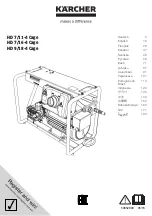
cutting must be counter-clockwise.
NOTE: inside and outside cuts will require
different feed direction, refer to section on
feeding the router. Feeding the tool in the
wrong direction, causes the cutting edge of
the bit to climb out of the work and pull the
tool in the direction of this feed.
Never use dull or damaged bits. Sharp
bits must be handled with care.
Damaged
bits can snap during use. Dull bits require
more force to push the tool, possibly
causing the bit to break.
Never touch the bit during or immediately
after the use.
After use the bit is too hot to
be touched by bare hands.
Never lay the tool down until the motor
has come to a complete standstill.
The
spinning bit can grab the surface and pull
the tool out of your control.
Never use bits that have a cutting
diameter greater than the opening in the
base.
Do not use the tool for drilling purposes.
This tool is not intended to be used with drill
bits.
Always use the tool with the depth guide
securely attached and positioned flat
against material being cut.
The guide
securely positioned on the material improves
the stability and control of your tool.
Some dust created by
power sanding, sawing,
grinding, drilling, and other construction
activities contains chemicals known to
cause cancer, birth defects or other
reproductive harm. Some examples of
these chemicals are:
• Lead from lead-based paints,
• Crystalline silica from bricks and cement
and other masonry products, and
• Arsenic and chromium from chemically-
treated lumber.
Your risk from these exposures varies,
depending on how often you do this type of
work. To reduce your exposure to these
chemicals: work in a well ventilated area,
and work with approved safety equipment,
such as those dust masks that are specially
designed to filter out microscopic particles.
-4-
!
WARNING
BM 2610995759 11/00 11/16/00 11:50 AM Page 4





































